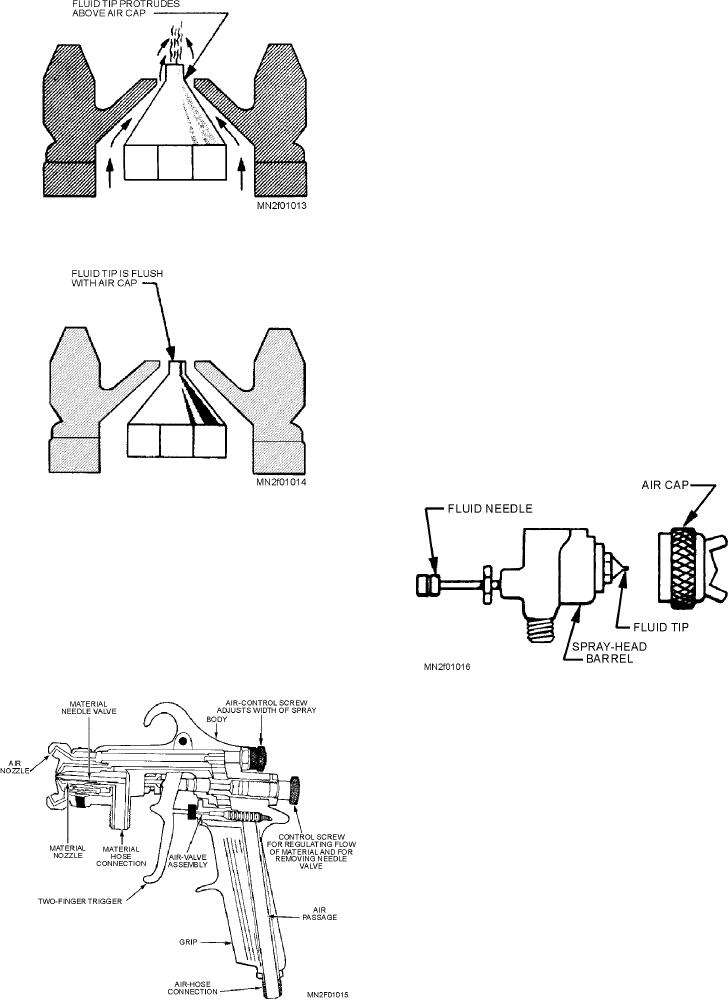
trigger. The air-control screw regulates the
amount of air supplied to the spreader horn holes
of the cap, thus varying the paint pattern. The
adjustment has a dial that can be set to give the
pattern desired. The fluid needle adjustment
controls the amount of spray material that passes
through the gun. The spray-head locking bolt
locks the gun body and the removable spray head
together.
Spray head: Most spray guns have a removable
spray-head assembly. This type of gun has
Figure 1-13.--Suction-feed air cap.
several advantages. For example, it is easier to
clean; it permits you to change the head quickly
when you want to use a new material or a new
color of material; and the head is replaceable
when damaged. The principal parts of the
spray-head assembly are the (1) air cap, (2) the
fluid tip, (3) the fluid needle, and (4) the
spray-head barrel. The fluid tip regulates the
flow of the spray material into the air stream and
encloses the end of the fluid needle. The
spray-head barrel is the housing that encloses the
spray-head mechanism. See figure 1-16.
Figure 1-14.--Pressure-feed air cap.
SPRAY GUN ASSEMBLIES AND COM-
PONENTS.--The two main assemblies of a spray gun
are the gun body and the spray head. Each assembly is a
collection of small parts designed to do specific jobs.
Gun body: The principal parts of the gun body
assembly are shown in figure 1-15. The air valve
controls the air supply and is operated by the
Figure 1-16.--Principal parts of the spray-head assembly.
Material containers: The material containers
are the cups that hold the spray material before
delivery to the gun. The type of painting job
determines which of the several kinds of
containers should be used. Suction-feed cups
are used for small quantities of lightweight and
medium-weight spray materials, such as
lacquers. Gravity-feed cups are small and are
attached directly to the top or side of the gun.
Normally, they are used only on artist's and
decorator's guns or on small touch-up guns.
Pressure-feed cups are best for handling small
quantities of enamels, plastics, or other heavy
materials on jobs where fine adjustments and
Figure 1-15.--Cross section of a spray gun.
speed of application are needed. See figure 1-17.
1-18

